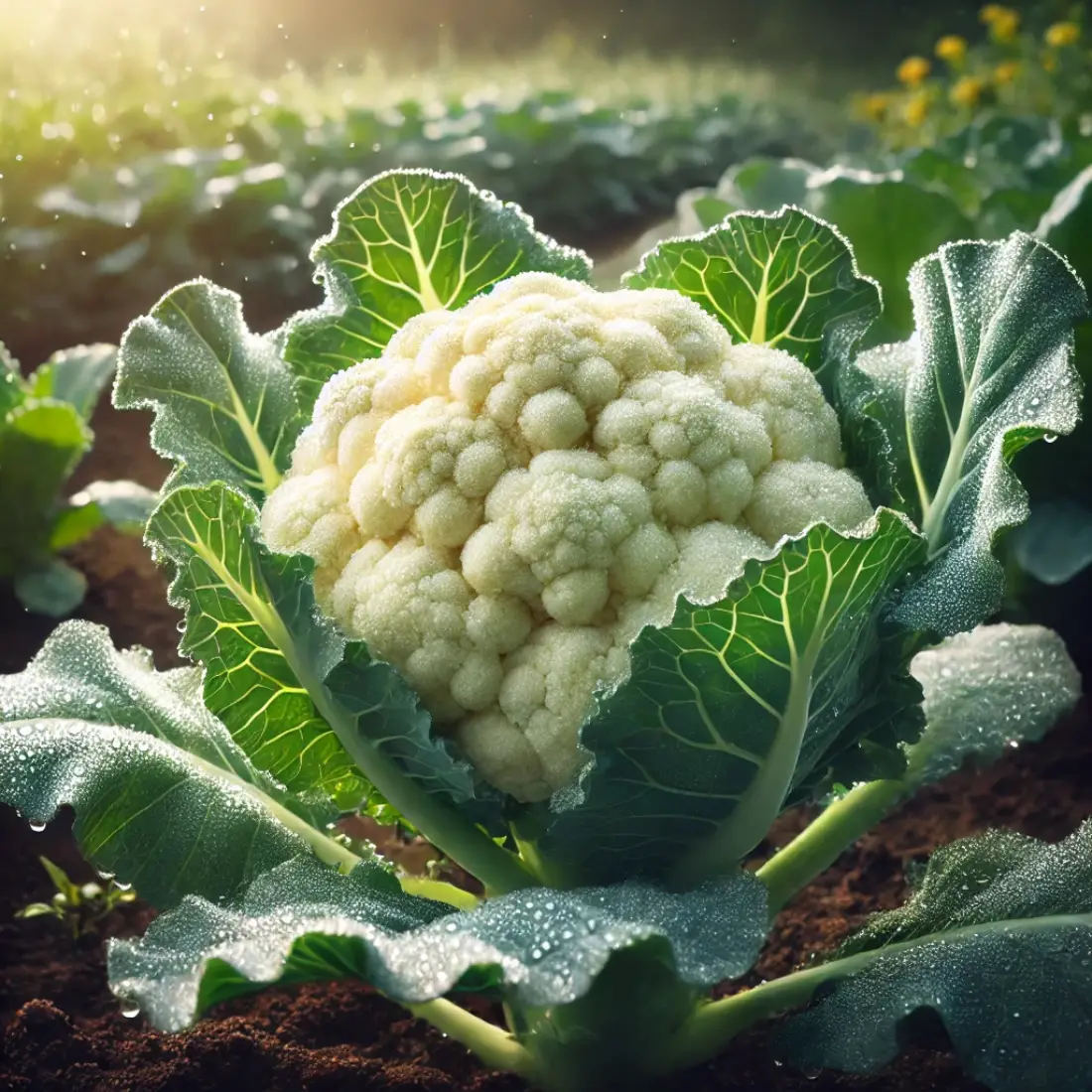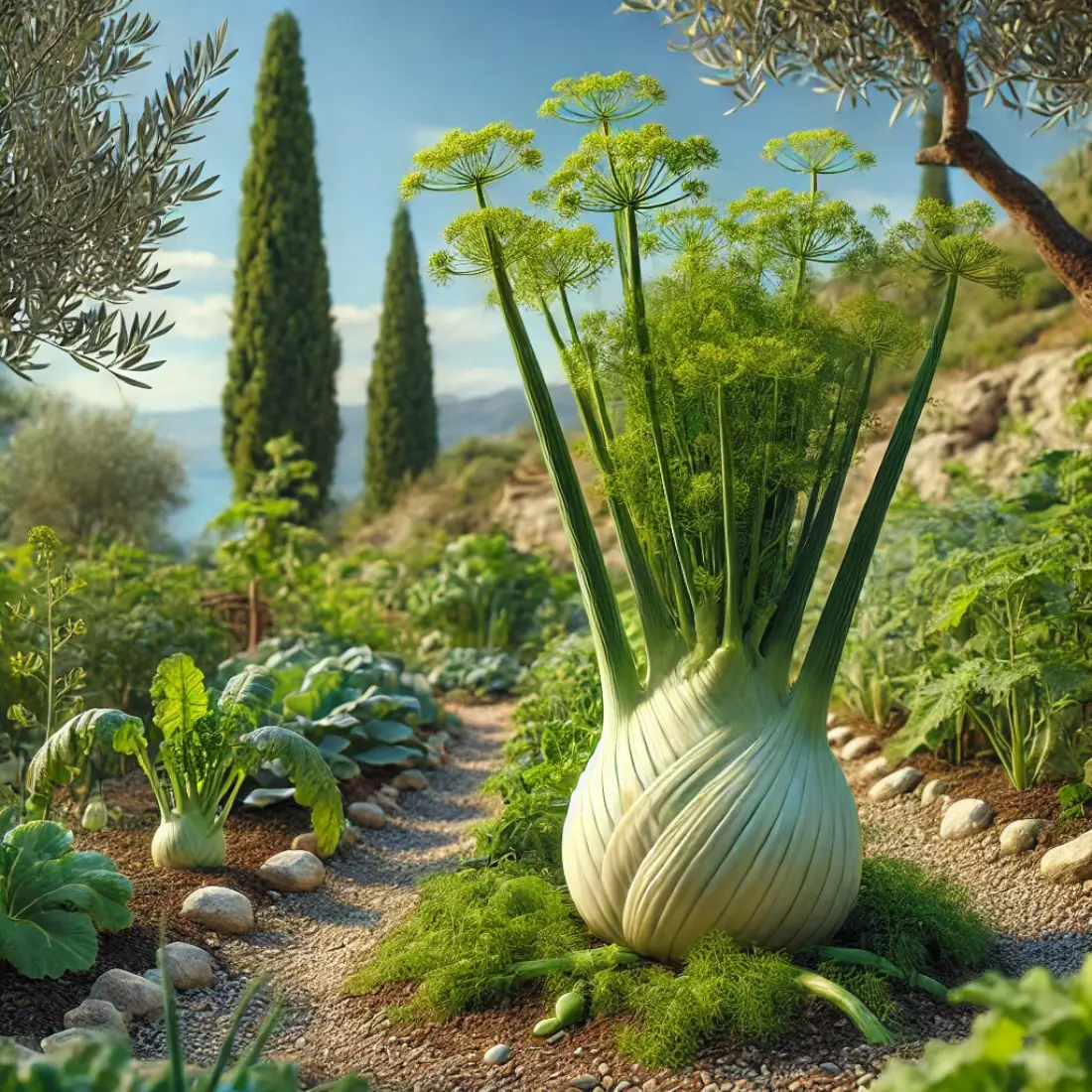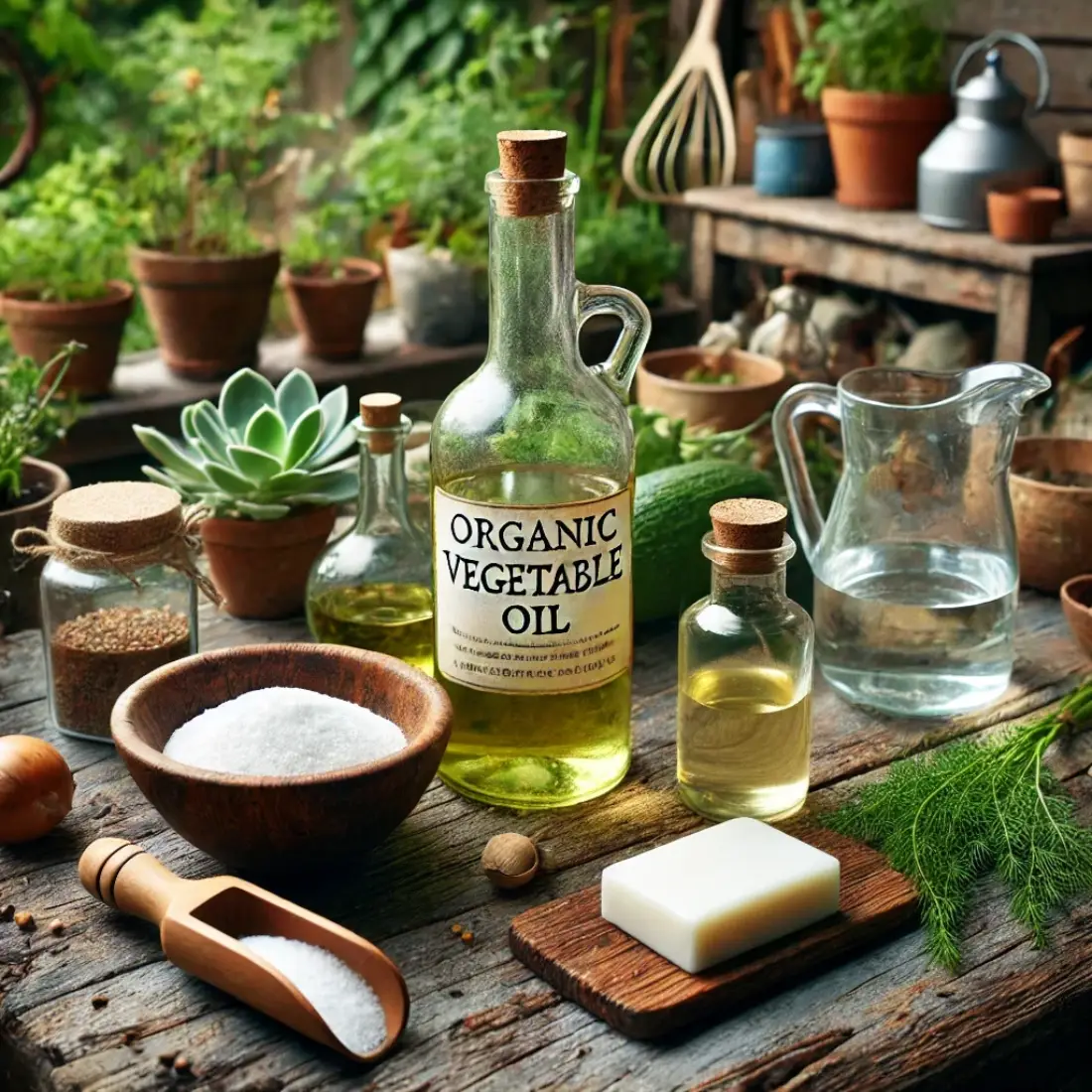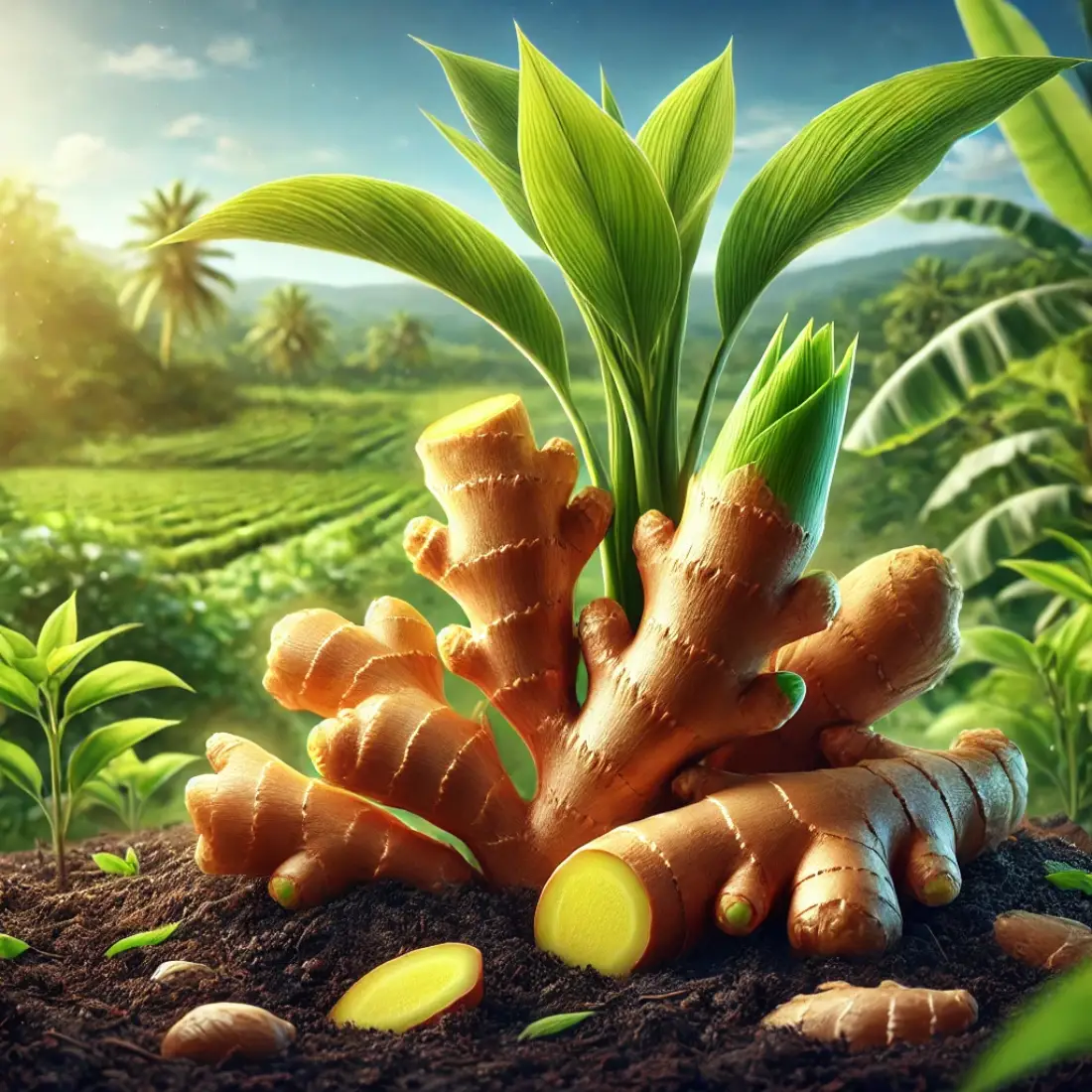Cauliflower is a versatile, nutritious vegetable from the Brassica oleracea species, including broccoli and cabbage. It’s known for its dense, edible head, typically white but also purple, green, and orange. Its mild flavor makes it a favorite in many dishes.
Growing cauliflower offers several benefits. It’s a cool-season crop that thrives in spring and fall. Rich in vitamins C and K, fiber, and antioxidants, it contributes to a healthy diet. Home-grown cauliflower allows control over pesticide and fertilizer use, ensuring organic produce.
Types of Cauliflower
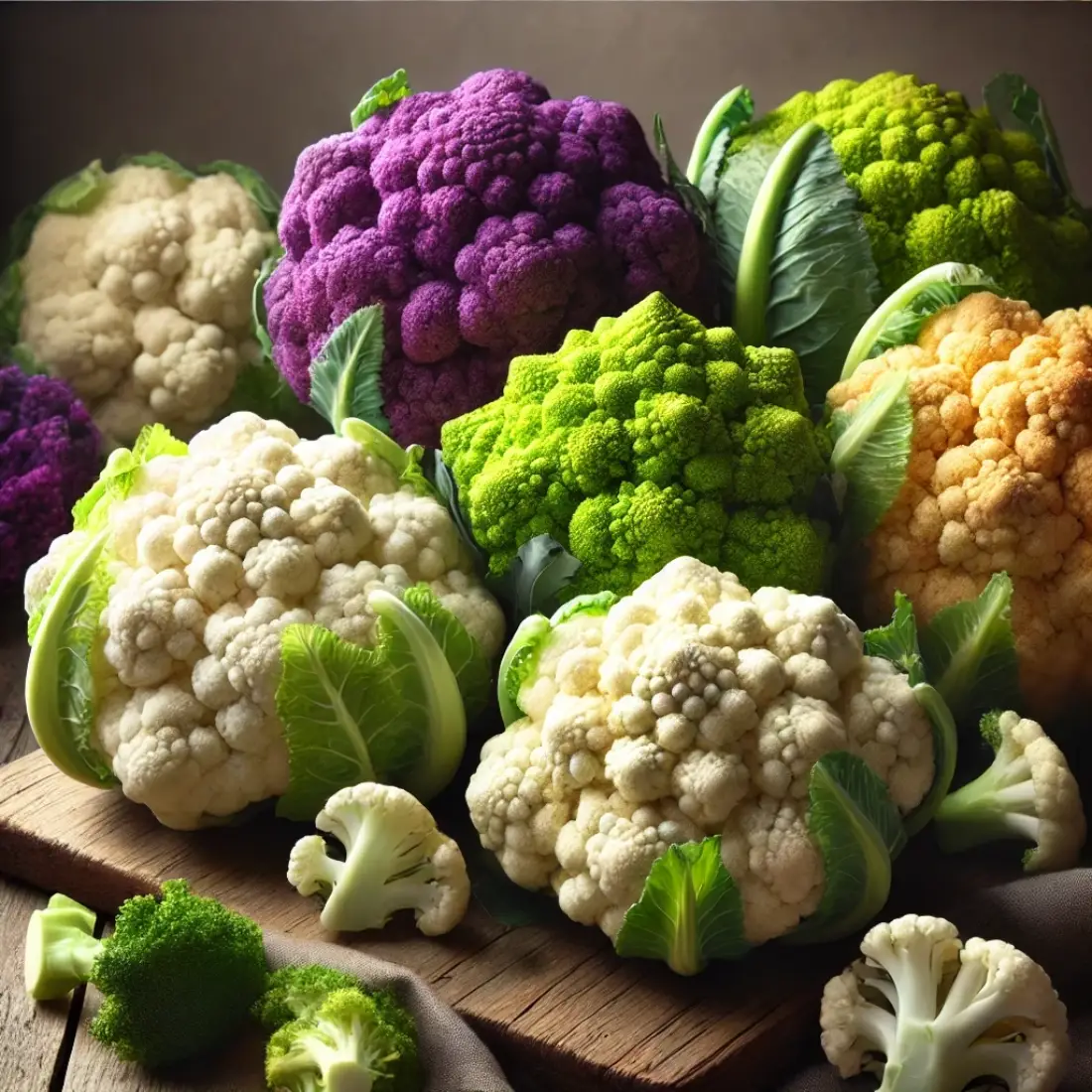
Cauliflower comes in several varieties, each with unique characteristics:
- White Cauliflower: The most common variety, white cauliflower is known for its creamy, white curd. It has a mild flavor and is widely used in various dishes, from raw salads to roasted sides.
- Purple Cauliflower: This variety gets its vibrant purple color from anthocyanins, antioxidants that offer additional health benefits. Purple cauliflower has a slightly nuttier flavor compared to white cauliflower and retains its color when cooked.
- Green Cauliflower (Broccoflower): A hybrid between broccoli and cauliflower, this variety features a unique lime-green color. It has a similar texture to traditional cauliflower but with a slightly sweeter taste.
- Orange Cauliflower: Rich in beta-carotene, orange cauliflower has a distinctive orange hue. It is slightly sweeter and creamier than other varieties and provides an extra boost of vitamin A.
Ideal Growing Conditions for Cauliflower
Growing cauliflower successfully requires meeting its specific needs:
- Climate: Cauliflower thrives in cool temperatures, ideally between 60°F and 70°F (16-21.11°C). It doesn’t tolerate extreme heat or frost, making spring and fall the best seasons for growing. In regions with mild winters, winter cultivation is also possible.
- Soil: This vegetable prefers well-drained, fertile soil rich in organic matter. Incorporating compost or well-rotted manure improves soil structure and nutrient content, promoting healthy growth.
- pH Levels: Cauliflower grows best in slightly acidic to neutral soil with a pH between 6.0 and 7.0. Conducting a soil test before planting helps ensure the pH is within this range.
- Sunlight: Cauliflower needs full sun, requiring at least 6 hours of direct sunlight daily. In hotter climates, providing some afternoon shade can help prevent the plants from overheating.
- Watering: Consistent moisture is crucial for cauliflower. The soil should be kept evenly moist but not waterlogged. Mulching helps retain soil moisture and regulate temperature.
- Spacing: Proper spacing of 18-24 inches between plants ensures adequate air circulation, reducing the risk of disease and allowing each plant enough room to develop a full head.
Planting Cauliflower
Starting Cauliflower Seeds
Starting cauliflower seeds indoors is recommended for a head start on the growing season:
- Timing: Start seeds indoors 6-8 weeks before the last expected frost date.
- Containers: Use seed trays or pots with good drainage.
- Soil: Fill containers with a high-quality seed starting mix.
- Sowing: Sow seeds 1/4 inch deep and keep the soil consistently moist.
- Germination: Maintain a temperature of 65°F-70°F (18-21.11°C) for optimal germination.
- Light: Provide 14-16 hours of light daily using grow lights or a sunny window.
Once seedlings have 2-3 true leaves, they can be transplanted outdoors.
Direct Sowing Cauliflower
Direct sowing is another option for planting cauliflower:
- Timing: Sow seeds directly in the garden 2-4 weeks before the last frost in spring, or 6-8 weeks before the first frost in fall.
- Soil Preparation: Ensure the soil is well-drained, fertile, and amended with compost.
- Spacing: Sow seeds 1/2 inch deep, spacing them 18-24 inches apart in rows 24-36 inches apart.
- Thinning: Once seedlings emerge, thin them to one plant every 18-24 inches to reduce competition.
Watering and Fertilizing Cauliflower
Proper watering and fertilizing are crucial for cauliflower growth:
- Watering: Maintain consistent soil moisture, watering deeply at least once a week. Mulching helps retain moisture and suppress weeds.
- Fertilizing: Use organic fertilizers such as compost, well-rotted manure, or fish emulsion to nourish cauliflower plants. Apply compost at planting and side-dress with manure or fish emulsion during the growing season. Organic fertilizers improve soil health and provide essential nutrients for robust growth.
Companion Planting with Cauliflower
Companion planting can improve cauliflower growth:
- Beneficial Companions: Plant cauliflower near beans, celery, and onions to improve growth and repel pests.
- Plants to Avoid: Avoid planting cauliflower near strawberries, tomatoes, and corn, as they can compete for nutrients and attract pests.
Mulching and Weed Control
Mulching and weed control are essential for healthy cauliflower plants:
- Types of Mulch: Use organic mulches like straw, compost, or shredded leaves to retain moisture and regulate soil temperature.
- Benefits of Mulching: Mulching helps suppress weeds, conserve moisture, and improve soil health.
- Weed Control Techniques: Regularly remove weeds by hand or with a hoe to prevent them from competing with cauliflower plants for nutrients and water.
Caring for Cauliflower
Monitoring and Managing Pests
Cauliflower is prone to various pests that can damage plants and reduce yields:
- Common Pests: Aphids, cabbage worms, and flea beetles are frequent cauliflower pests.
- Natural Pest Control: Introduce beneficial insects like ladybugs and lacewings, which prey on aphids. Use neem oil or insecticidal soap to control pest populations.
- Physical Barriers: Employ row covers to protect plants from pests. Regularly inspect plants and handpick any visible pests to minimize damage.
Preventing and Treating Diseases
Cauliflower can be affected by several diseases, which need to be managed for healthy growth:
- Common Diseases: Clubroot, black rot, and downy mildew are prevalent cauliflower diseases.
- Disease Prevention: Practice crop rotation, avoiding planting cauliflower or other brassicas in the same location each year. Ensure proper spacing to improve air circulation and reduce the risk of fungal diseases.
- Treatment Options: Remove and destroy infected plants immediately to prevent the spread of disease. Use organic fungicides as needed, and maintain proper garden hygiene.
Pruning and Thinning Cauliflower Plants
Pruning and thinning help cauliflower plants develop properly:
- Importance of Pruning: Remove yellowing or damaged leaves to improve air circulation and reduce disease risk.
- Thinning Seedlings: If direct sowing, thin seedlings to one plant every 18-24 inches once they have a few sets of true leaves. This reduces competition and ensures each plant has enough space to grow.
- Managing Plant Spacing: Ensure proper spacing throughout the growing season to promote healthy development and reduce pest and disease issues.
Harvesting and Storing Cauliflower
When and How to Harvest Cauliflower
Knowing the right time and method for harvesting ensures the best quality cauliflower:
- Signs of Readiness: Harvest cauliflower when the heads are compact, firm, and reach 6-8 inches in diameter. The curds should be tightly packed and white for white varieties.
- Harvesting Technique: Use a sharp knife to cut the head off the plant, leaving a few inches of stem and some surrounding leaves to protect the curd. Be gentle to avoid damaging the head.
- Timing: Harvest in the morning when temperatures are cool to maintain the curd’s freshness and reduce wilting.
Storing Fresh Cauliflower
Proper storage methods extend the freshness of harvested cauliflower:
- Short-term Storage: Store fresh cauliflower in the refrigerator. Wrap it in a damp paper towel and place it in a perforated plastic bag. It can last up to 1-2 weeks.
- Long-term Storage: For longer storage, blanch the cauliflower by boiling the heads for 3 minutes and then plunging them into ice water. Drain and pat dry before freezing. Freeze in airtight bags or containers, and it can last up to 12 months.
FAQs about Growing and Caring for Cauliflower
How long does it take to grow cauliflower?
Cauliflower typically takes 55 to 100 days to mature from transplanting, depending on the variety and growing conditions. Early-maturing varieties can be ready in as little as 50 days.
What are the best varieties of cauliflower for beginners?
Some of the best cauliflower varieties for beginners include ‘Snowball Y Improved,’ ‘Cheddar’ (orange), ‘Graffiti’ (purple), and ‘Romanesco’ (green). These varieties are relatively easy to grow and offer unique colors and flavors.
How do I prevent my cauliflower from turning bitter?
To prevent bitterness, ensure consistent watering, provide adequate nutrients, and avoid exposing the plants to extreme heat or prolonged periods of stress. Harvest cauliflower heads promptly once they reach maturity.
Can I grow cauliflower in containers?
Yes, cauliflower can be grown in containers. Use a large pot (at least 12 inches deep and wide) with good drainage, fill it with high-quality potting soil, and ensure the plants receive full sun and consistent moisture.
What should I do if my cauliflower plants bolt?
Bolting occurs when plants flower prematurely, often due to stress or temperature fluctuations. If bolting starts, harvest the head immediately. To prevent bolting, maintain consistent growing conditions and choose bolt-resistant varieties.
How often should I water my cauliflower plants?
Cauliflower plants need consistent moisture. Water deeply once a week, ensuring the soil is evenly moist but not waterlogged. In hot or dry conditions, increase the frequency of watering.
What nutrients does cauliflower need to grow well?
Cauliflower requires a balanced supply of nitrogen, phosphorus, and potassium. Supplement with organic fertilizers like compost, well-rotted manure, or fish emulsion.
Why are my cauliflower heads turning brown or black?
Discoloration can be caused by several factors, including nutrient deficiencies (especially boron), pest damage, or exposure to direct sunlight. To prevent this, ensure balanced fertilization, protect heads from sun exposure by covering them with leaves, and monitor for pests.
Can I grow cauliflower year-round?
Cauliflower is a cool-season crop and generally grows best in spring and fall. However, in regions with mild winters, it can be grown during the winter months. Avoid growing during peak summer heat as it can stress the plants and affect head formation.
How do I deal with aphids on my cauliflower plants?
To control aphids, use a strong stream of water to knock them off plants, introduce beneficial insects like ladybugs, or apply neem oil or insecticidal soap. Regularly inspect plants and remove aphids by hand if the infestation is small.

